Where Gumbo Was #352
I've passed by the building a thousand times, in cars, on buses and on foot, but until a few weeks ago, I never stopped to see what was inside the unusual building, or even to look much at the outside, although it's a building that's hard to really ignore, with its unusual proportions and its mundane neighbors.
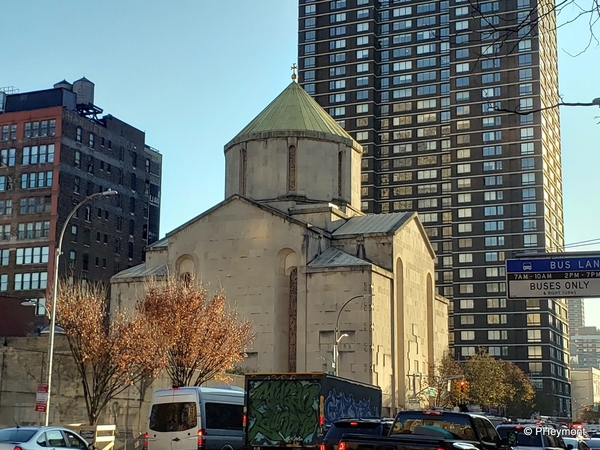
On an afternoon kill-some-time walk, though, I decided to wander in and at least find out why it's so unusual in design and who worships there. The big surprise for me was not that there's an Armenian cathedral in midtown Manhattan, but how much a surprise the interior is compared to the stark outer walls.
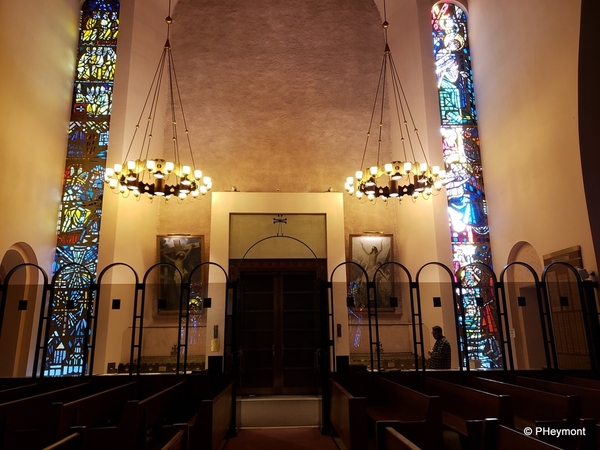
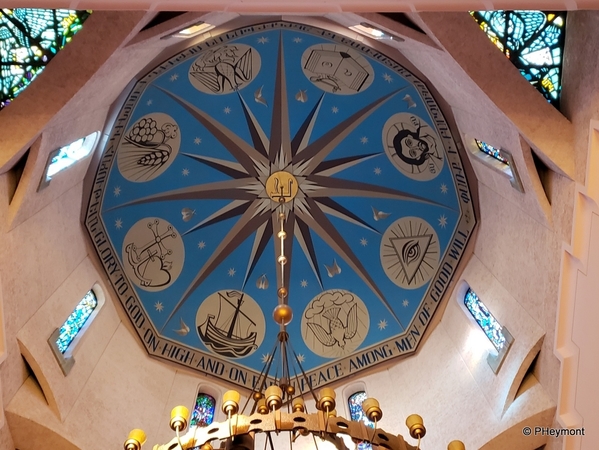
But first a word about cathedrals: There's a Liverpool song with the line "If you want a cathedral, we've got one to spare. It wasn't until after my visit to St Vartan's and an online search for more information that I realized how many we actually have in New York: 26, and representing eighteen different denominations, some of them with confusingly similar names.
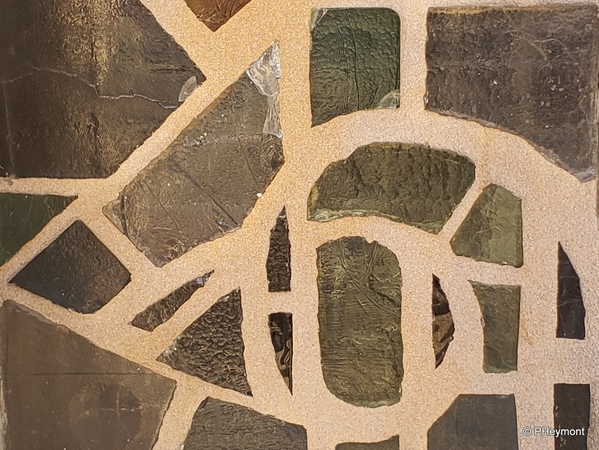
These glass panels, with their seemingly random pieces, look vastly different viewed from the inside, where the color behind them shines through.
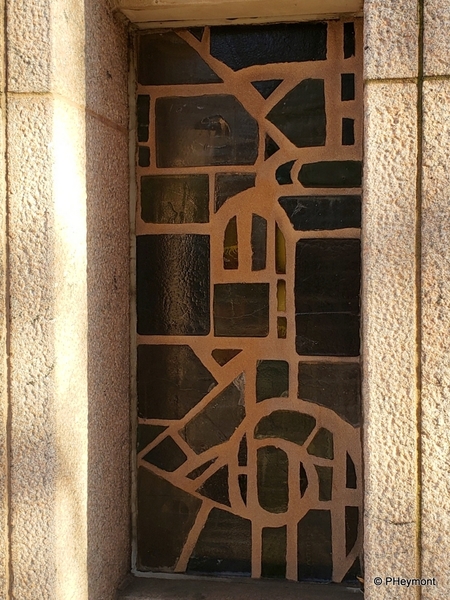 I won't attempt to sort out all the faiths; I'll simply say that the Armenian Church in America is part of the Oriental Orthodox Communion that includes Coptic and Syriac churches, and traces its history from the Council of Chalcedon in 451, where it separated from both the Catholic and Eastern churches.
I won't attempt to sort out all the faiths; I'll simply say that the Armenian Church in America is part of the Oriental Orthodox Communion that includes Coptic and Syriac churches, and traces its history from the Council of Chalcedon in 451, where it separated from both the Catholic and Eastern churches.
Armenians first came to the U.S. in large numbers at the end of the 19th century, fleeing massacres and oppression, with even more coming after the Armenian Genocide of 1915 and on. While California had and has the largest communities, New York and Massachusetts also developed sizable communities. Congregations in the early days usually worshipped in homes or borrowed churches, but by 1945, the Armenian Apostolic Church decided it was ready to have a cathedral, and to build it in New York, near the new UN.
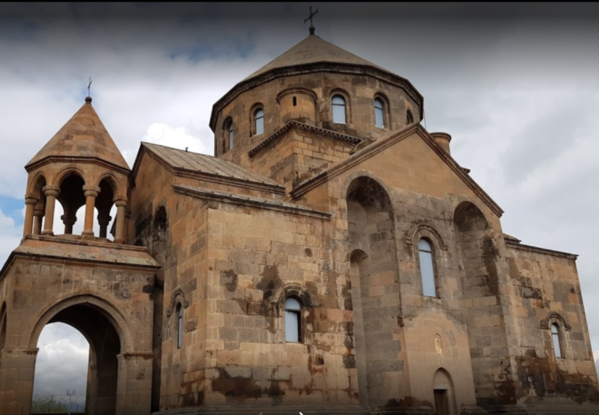
St Hripsime Church (Jens Krone, Wikimedia Commons)
But fund-raising is never easy and cathedrals don't spring up overnight. St Vartan's finally opened in 1968—not a long time when you think of medieval churches, but a long struggle for a modern building. Or perhaps I should say, for a building in modern times, because the building is based on Saint Hripsime Church in Etchmiadzin, Armenia, built in the 7th century.
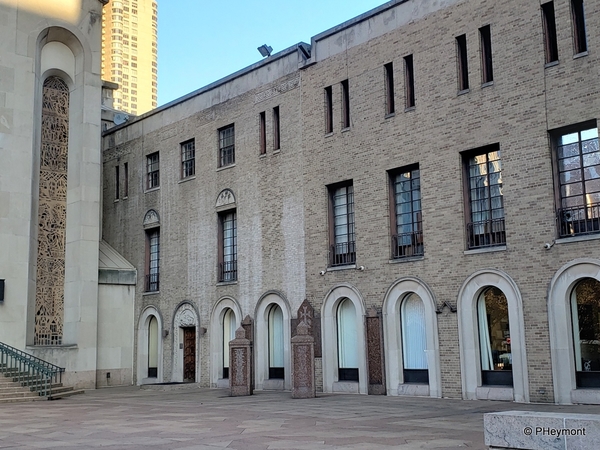
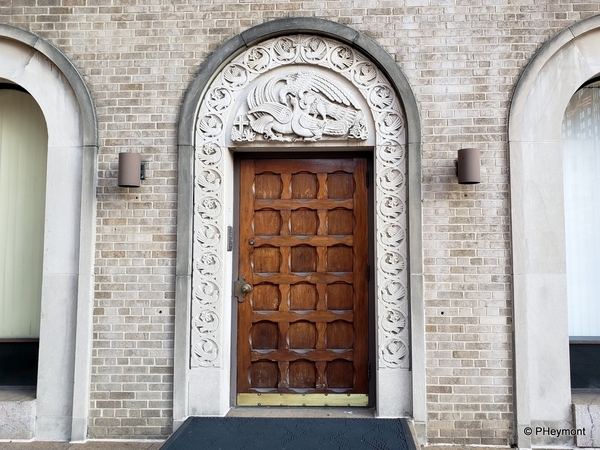
First built, in 1959, was a simple building, the Diocesan House, above, with offices of the national church. Next, in 1967, came the Cultural Center that sits between the Diocesan House and the Cathedral, and finally, the next year, the Cathedral was completed and consecrated.
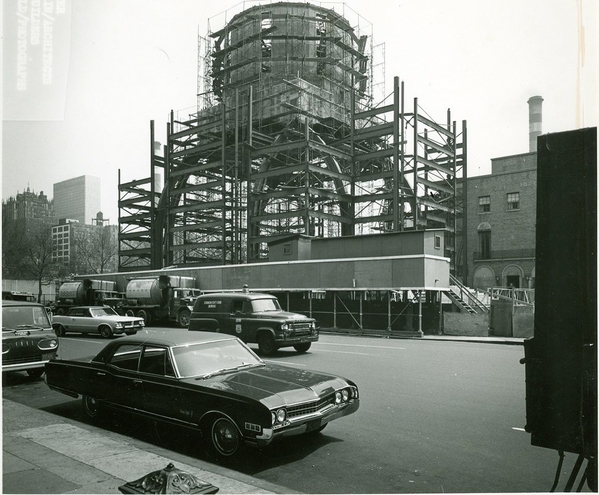
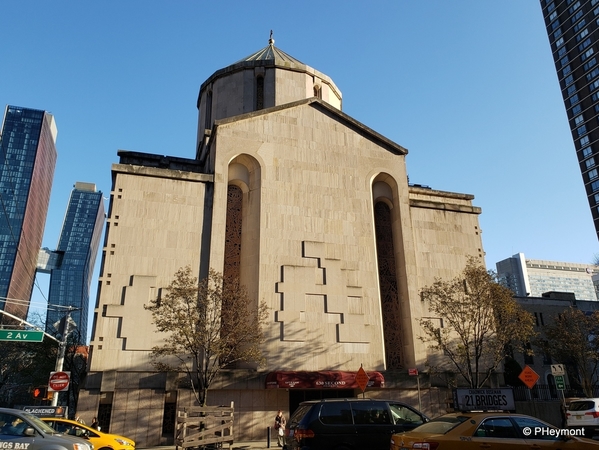
Under construction in 1967; you could have thought it was to be a water tower, and as it stands today.
I've now visited St Vartan's twice; the first day was so sunny and the hour so wrong that it was hard to photograph the facade without a great shadow across it.
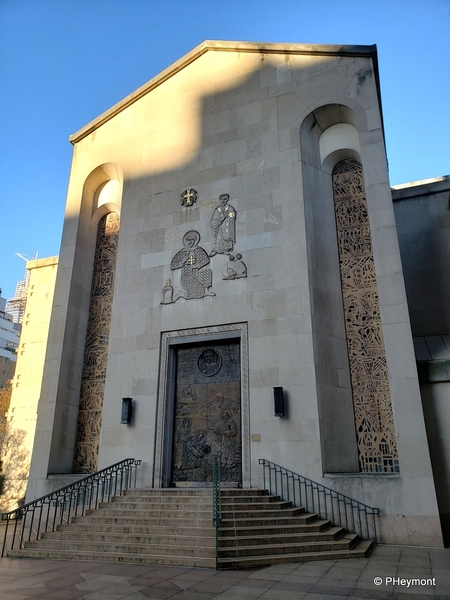
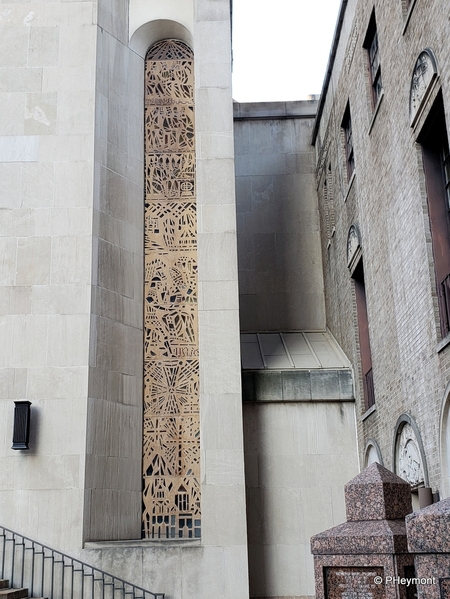
The time between the visits also gave me time to read some more, and to consider my fascination with the contrast between interior and exterior, the one nearly monochromatic, the other lit up in color by windows barely hinted at from outside.
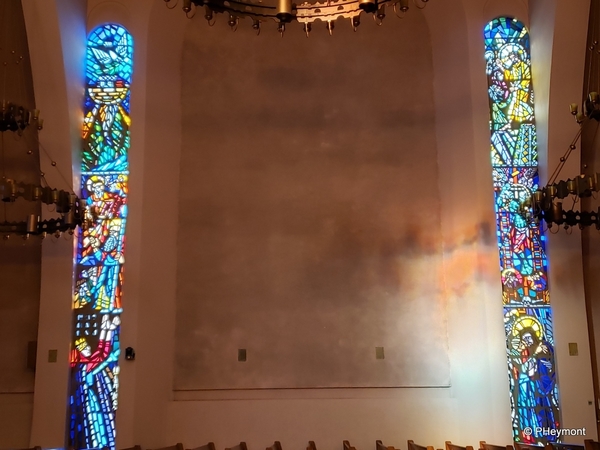
In a small way, it reminded me of the Antoniuskirche I visited last summer in Basel—a relatively plain exterior transformed by the light passing through the windows.
The elegant entry, with its compact but impressive stairs and its beautiful reliefs is a measure of the detailed care given to the building; it's also reflected in many other bits of artwork throughout.
Behind those impressive doors—I can testify that they are heavy as well as beautiful—are simple but beautiful interior handles, carved as animal heads. The rise of the steps is mirrored in the multi-level altar piece.
Inscriptions, both in English and the flowing Armenian characters have been given full attention as well, even on the offering box (is there a church without them? I doubt it.)
In the cathedral's forecourt, two sculptures, each telling a traditional story but in a decidedly non-traditional form, caught my attention. The older is Descent from The Cross, by Reuben Nakian. It weighs well over three tons, and was intended as a first step toward establishing an Armenian Museum of Art and Antiquity in New York.
The other, Migrations, by Michael Aram, was installed in 2015, the hundredth anniversary of the Armenian Genocide. It shows hundreds of birds, representing fleeing people, rising up to begin a journey, leaving behind a cavity in their homeland.
Getting ready for Christmas at St Vartan's.
And congratulations to George G, who once again cracked the mystery!

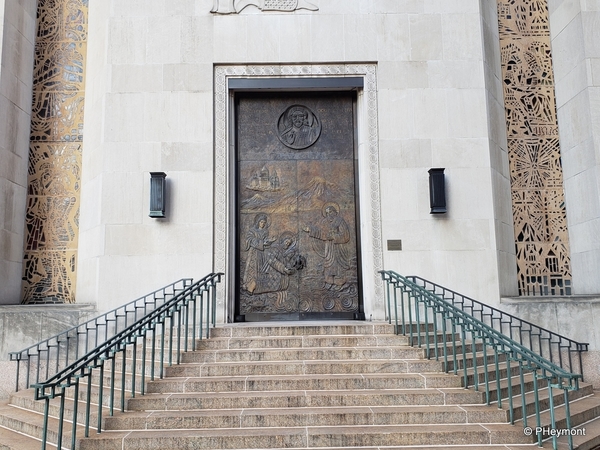
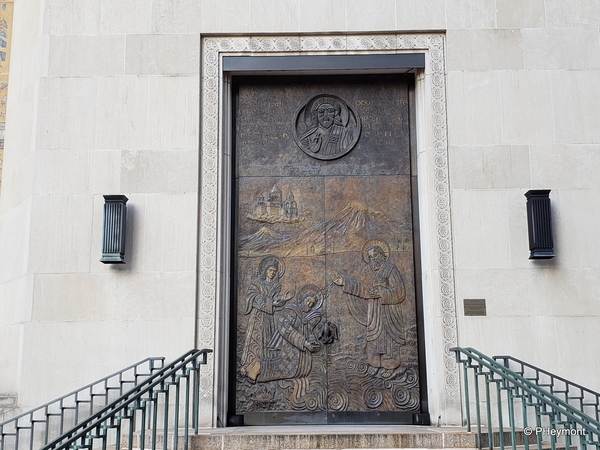
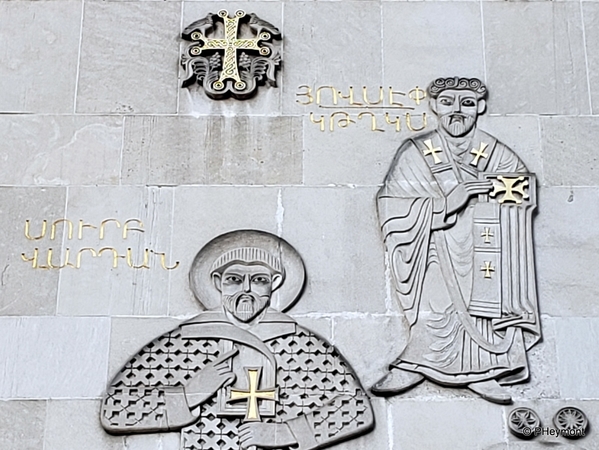
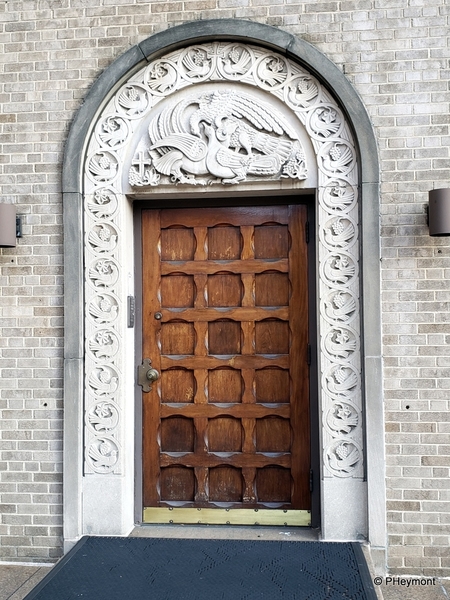
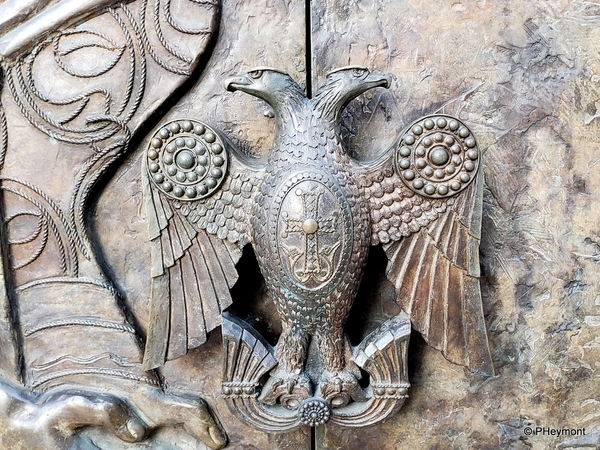
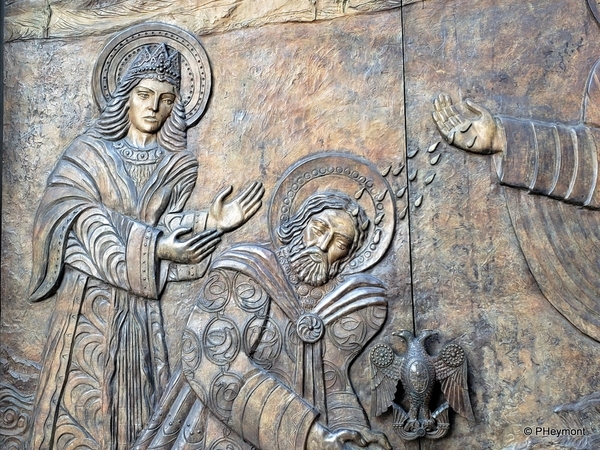
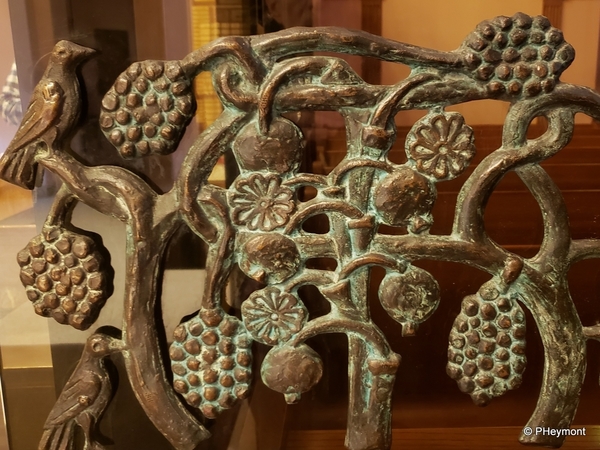
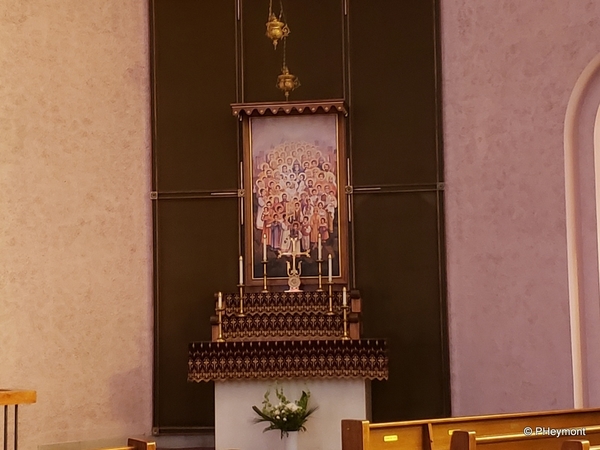
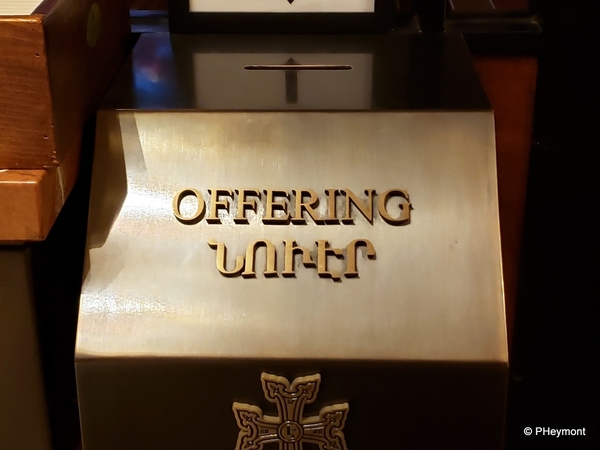
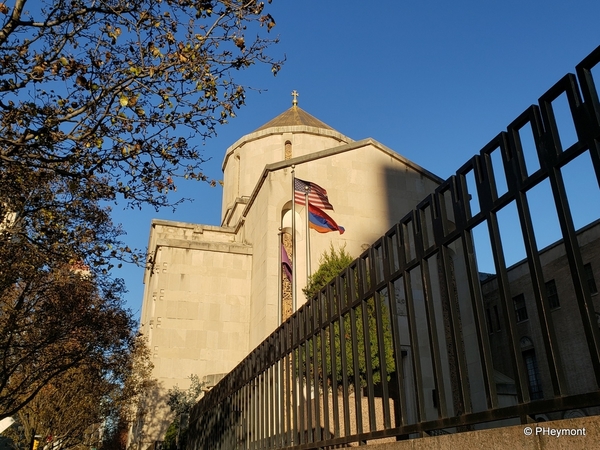


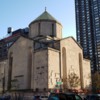



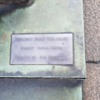













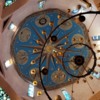






Comments (0)